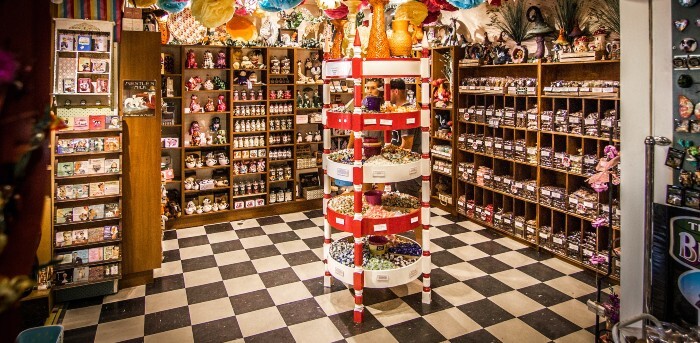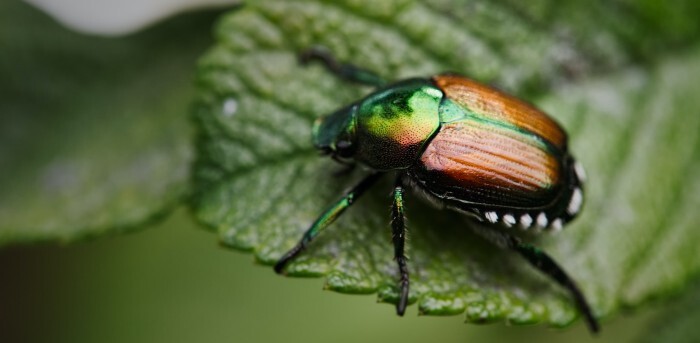Candy Corn: The Complete History of the Worst Halloween Candy

Halloween, as with all events in American society, is a time to argue. What’s your favorite scary movie? Do the rich houses give out the best or the worst candy? And is that best or worst candy, in fact, candy corn? There’s no more divisive candy out there, which makes sense because there’s no other candy that’s based on a grain. What is this shit? Where did it come from? And why does no one seem to (correctly) feel that it’s only fine?
Who Invented Candy Corn?

It’s generally accepted that an employee named George Renninger of Philadelphia’s Wunderle Candy Company invented candy corn in the 1880s, but in truth, it was probably a lot of people. It’s kind of like trying to figure out who came up with a joke on Twitter. It’s candy shaped like corn -- it’s not that hard.
Butter Creams

Candy corn is a type of candy known as a butter cream, made of sugar, corn syrup, fondant, and marshmallow, which were considered a cheap alternative to marzipan and a super popular candy genre at the time. It was a rough time to be a candy lover.
Agricultural Candy

Believe it or not, there used to be a whole world of candy that looked like the sorts of things you dutifully swallow in order to get candy, like turnips, chestnuts, and pumpkins. It was all part of the “agricultural candy” fad designed to appeal to rural populations and farmers, which made up a full half of the American labor force at the time. You know how people today go nuts for Barista Pops and Executive Assistant Chews.
Those Magical Three Layers
What set candy corn apart from the rest of those sugar vegetables was its distinctive layers that were molded together, which people found so novel and exciting that candy corn soon became the dominant player in the agricultural candy game. It didn’t take a lot to work people up back then.
“Chicken Feed”

In 1898, the Goelitz Candy Company, which is now Jelly Belly, acquired candy corn and marketed it as “Chicken Feed,” but it wasn’t just a cutesy brand name. At the time, corn was not considered people food, so it was kind of like trying to market sugar-coated dog kibble.
Penny Candy

Cementing candy corn’s popularity despite its cement-like flavor was its status as a “penny candy,” something candy stores sold out of huge bins for next to nothing. It might not have been good, but it was incredibly cheap.
Seasonal Production Made It a Fall Staple
Before widespread industrialization, candy corn was a huge pain in the ass to make, requiring workers to carry heavy buckets back and forth over a conveyor belt until they could find better jobs as chimney sweeps or whatever. As a result, manufacturers conceded to limiting the production of candy corn to March through November, making fall the harvest season for candy, too.
Becoming Halloween Candy

When Halloween really started becoming a thing in the mid 20th century, candy companies jumped on it and started considering which of their year-round offerings they could insist had always been Halloween treats. Candy corn was a natural fit, having become associated with autumn, so they slapped it into teeny bags and earmarked all their candy corn marketing dollars for October (or, now, July).
The 1950 Candy Corn Poisoning Scandal
This backfired pretty much immediately in 1950, when kids ate so much candy corn all at the same time that they got sick, and not just the expected tummy ache. It turned out the orange dye used in candy corn, as well as a lot of other foods, at the time was toxic in such large doses, so they realized they probably shouldn’t have been using food coloring made out of coal tar to begin with and outlawed it.
The 2021 Ransomware Attack
Candy corn didn’t really make big headlines again until 2021, when Brach’s fell victim to a ransomware attack that interrupted candy corn production right at the start of the Halloween season. It was great fodder for jokes about the people rising up against candy corn, but it was more likely just plain old cyber crime, and the involvement of candy corn was incidental.
Different Varieties of Candy Corn

Once the machines took over, manufacturers realized making a product that’s only consumed one night a year is kind of a bad business model and started producing different varieties of candy corn for different holidays, but they’ve never taken off the way candy corn did. Give it up, Brach’s. Stop trying to make “reindeer corn” happen.
What is Candy Corn Made Of?

The formula for candy corn still includes the same basic ingredients that it did back in the 19th century, but these days, it also often includes gelatin or “confectioner’s glaze,” which is “a secretion produced by some species of insects native to Asia.” In other words, bug juice.
Is There a Difference in the Layers?
You might have spent many post-trick-or-treating nights debating the difference in the flavors of the three layers of candy corn, but manufacturers say the only difference is the variation of food coloring. That doesn’t mean your friend was lying when they said they could tell which was which by taste alone -- studies suggest that it is possible, but that would just be because the dyes taste different. So you were all right. Rejoice!
Why Candy Corn is So Divisive

There’s a scientific reason people feel so strongly about candy corn, mostly because it’s a flavor so inextricably linked to childhood. "The area of the brain where we process smell (which has a major impact on how we process taste) … is in the same part of the brain where we store memories and evoke emotion," explained one food scientist, so loving or hating candy corn may very well have to do with whether you ate it as a child and whether childhood was an awesome time for you. Feel free to test the theory by quizzing your friends about their childhood traumas over the candy bowl.
Why Candy Corn Sucks

But there’s a scientific reason for specifically disliking candy corn as well. It’s mostly the lack of acid, which can make it taste too sickeningly sweet for some people, so no matter which side of the great candy corn debate you fall on, you’ve got science on your side. Surely this will put a stop to all arguments.
Top image: Mary Jane Duford/Unsplash